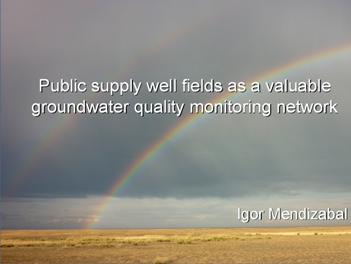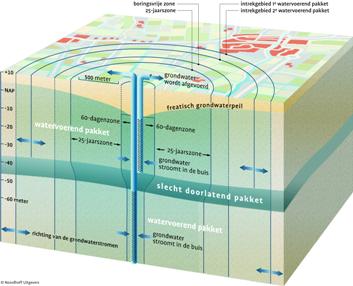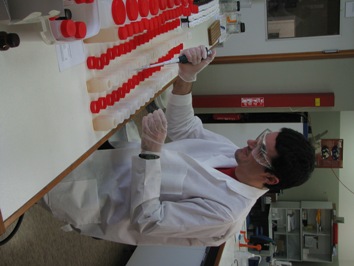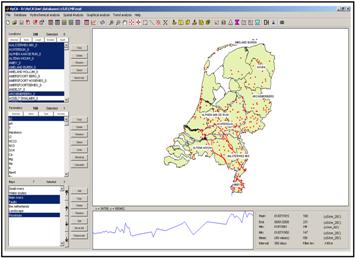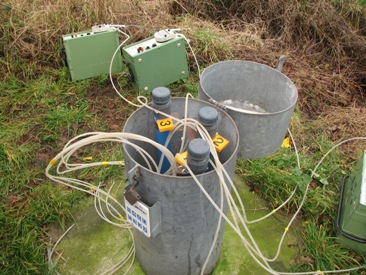Public supply well fields as a valuable groundwater quality monitoring network
Supervisors and collaborators:
Duration: 2005-2011
Funding:
Research questions
Groundwater is of major societal significance for many well-known reasons.
One of the most important ones is that groundwater normally offers a direct and hygienically safe source of drinking water for public and individual supply.
Groundwater resources in the Netherlands are becoming, however, extremely vulnerable to human interference because of their hydrogeological structure and the multitude and variety of anthropogenic attacks. Knowledge of the vulnerability and natural backgrounds of groundwaters is of key importance for sustainable groundwater development, and environmental impact assessment.
The aim of this PhD research is to determine, for the groundwater pumped for public drinking water supply, the following:
- The natural background composition
- the quality evolution during the past 110 years
- the origin of dissolved nitrate and sulfate, the contribution of infiltrated surface water to the overall composition, and the approximate age of the groundwater pumped
- the future quality development
- how vulnerable the responsible well fields are to the various types of (anthropogenic) pollution
For this purpose, a database was made with mean yearly composition of groundwater in all wellfields, and the computer program HyCA was developed to ease the analysis, visualization, interpretation and presentation of the large amount of data gathered in the database.
Publications
- Mendizabal, I., Baggelaar P. K., Stuyfzand, P.J., 2012. Hydrochemical trends for public supply well fields in The Netherlands (1898-2008), natural backgrounds and upscaling to groundwater bodies. Journal of Hydrology 450-451(0): 279-292.
- Mendizabal, I., 2011. Public supply well fields as a valuable groundwater quality monitoring network. PhD Thesis, VU University Amsterdam, Amsterdam, 120 pp.
- Mendizabal, I., Stuyfzand, P.J., 2011. Quantifying the vulnerability of well fields towards anthropogenic pollution: The Netherlands as an example. Journal of Hydrology, 398(3-4): 260-276.
- Mendizabal, I., Stuyfzand, P., Wiersma, A., 2011. Hydrochemical system analysis of public supply well fields, to reveal water-quality patterns and define groundwater bodies: The Netherlands. Hydrogeol. J. , 19(1): 83-100.
- Stuyfzand, P.J., Mendizabal, I., 2010. Trace element concentrations of groundwater from public supply well fields, and their relation with marine sedimentary environments of the aquifer and postdepositional salinity changes, Proc. SWIM-21, Acores.
- Mendizabal, I., Stuyfzand, P.J., 2009. Guidelines for interpreting hydrochemical patterns in data from public supply well fields and their value for natural background groundwater quality determination. Journal of Hydrology, 379(1-2): 151-163.
- Stuyfzand, P., van Rossum, P., Mendizabal, I., 2008. Does arsenic, in groundwaters of the compound Rhine-Meuse-Scheldt-Eems delta, menace drinking water supply in the Netherlands? In: Appelo, T. (Ed.), Arsenic in groundwater - A world problem. NNC-IAH Publication. Netherlands National Committee of the IAH, Utrecht, pp. 102-125.
- Mendizabal, I., Stuyfzand, P.J., 2007. New software for ground- and surface water quality data. H2O (in Dutch), 9(2007): 40.
- Mendizabal, I., Stuyfzand, P.J., 2006. HyCA: Nieuwe software realiseert droom van een ieder die waterkwaliteitsgegevens verwerkt. Tijdschrijft Bodem (in Dutch), 5(2006): 169.


